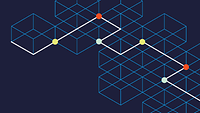
NATONorth Atlantic Treaty Organization 2022 Strategic Concept
NATONorth Atlantic Treaty Organization’s Strategic Concept defines the security challenges facing the Alliance and outlines the political and military tasks.


Germany's naval forces must be geared to deterrence, defense and progress. This is to be achieved through comprehensive entry into unmanned systems in particular.
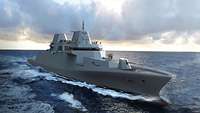
The future Class 126 frigates will have different capability modules to adapt to the respective operational requirements. Unmanned systems will make them even more flexible in dangerous situations.
Damen ShipyardsThe Bundeswehr must “become the cornerstone of conventional defence in Europe, the best- equipped force in Europe”. This is what Federal Chancellor Olaf Scholz declared at the Bundeswehr Commanders’ Conference in 2022. He stated the core mission of the Bundeswehr was national and collective defence, and all other tasks had to be subordinated to this mission.
The Chancellor thus specified his expectations towards the Bundeswehr, taking up NATONorth Atlantic Treaty Organization’s Strategic Concept, also adopted in 2022: deterrence and defence, crisis prevention and management as well as cooperative security continue to be the missions of Alliance`s, but with a clear emphasis on deterrence. This requires the German Navy in particular to exhibit high combat readiness and to demonstrate its presence in the North Atlantic Ocean, the North and Baltic Seas, already in peacetime.
At the same time, technical innovations are fundamentally changing the conditions in the maritime area of operations. New underwater sensor systems as well as extensive shore-based, airborne, and space-borne reconnaissance render the battlefield increasingly transparent. From the resulting large amounts of data, complex ITInformationstechnik systems – supported by artificial intelligence (AI) in the future – generate comprehensive situational pictures.
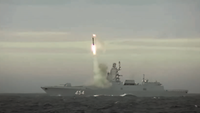
Potential threat and technological benchmark: a Russian frigate fires a 3M22 Zircon hypersonic anti-ship missile, May 2022.
source: Youtube/Forces News, 04/01/2023; retrieval: 08/02/2023Also in parallel, potential adversaries possess high-performance weapon systems, some of which are extremely difficult to counter. There is less and less time for defensive reaction. Additional losses in combat must therefore be expected, which underlines the value of quantity: mass matters.
Another consequence of technological development is that the threat in combat increases to such an extent that own soldiers are to be exposed to it only to the extent absolutely necessary. Therefore, the trend clearly goes towards unmanned systems that can be employed in a joint network.
The most urgent requirement is a sufficient and continuously updated situational picture of all activities in our area of operation. In particular, it is necessary that we detect any adversary activities, assess them and exchange situational pictures both at national and Alliance level.
In order to remain capable of acting on the basis of this situation picture and to be able to counter these activities, we need naval warfare means on, above and below water as well as in the air. The tasks to be mastered range from observing and/or impeding an adversary in peacetime to fighting him in times of war.
Outstanding resilience is indispensable for this as it ensures one’s own capability to take action despite an adversary’s activities. It requires structural, functional, and individual reserves. It also comprises the decentralisation of task assignment and responsibility in order to be prepared for a failure of central systems.
It is an expression of political will and a signal; it demonstrates solidarity within the Alliance and defence readiness. Presence also contributes to the situational awareness within the area of operation and increases the responsiveness of own forces.
To address this, the German Navy needs a sufficient number of vessels as well as fixed-wing and rotary aircraft that allow it to ensure a sustainable presence in its areas of operation.
Attacks from sea to shore (maritime strikes) reduce an adversary’s options for action. They are mainly directed against command and control installations, sensor and weapon stations as well as logistic centres. It is thus possible to minimise the denial of access to an area by the enemy by means of fast, modern guided missiles (anti-access/area denial) so that sea routes in a region such as the Baltic Sea can be navigated safely again.
To address this, the German Navy primarily needs a sufficient number of above-water and underwater platforms that are fast, difficult to detect, and preferably unmanned, in order to reduce an adversary’s response time.
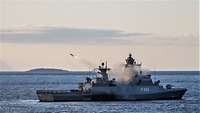
The Navy needs more maritime strike capabilities, especially against the anti-access/area denial threat. The current number of land-attack capable RBS15 guided missiles on Type 130 corvettes is limited.
Bundeswehr/Marcel KrönckeAction against sur- face and airborne targets is a prerequisite for preventing an adversary from using a maritime space. This is especially important for supply routes across the North Atlantic Ocean and into the Baltic Sea.
To address this, the German Navy needs long- range sensor systems for tactical surface picture compilation, and defensive and offensive weapon systems as well as floating and flying platforms for above-water warfare.
The underwater sub- domain is rapidly gaining in importance. Modern submarines and other submersibles can cause enormous damage, even in peacetime, because it is difficult to attribute underwater attacks on civilian and military targets to a responsible party.
To address this, the German Navy needs modern sensor systems – both stationary and mobile – and AI-based evaluation of tactical subsurface pictures, as well as defensive and offensive weapon systems, submarines and unmanned vehicles for underwater warfare.
Geographic conditions of the Baltic Sea make it necessary to secure positions lying within an adversary’s range. Threats do not only come from aircraft or guided missiles but can also be posed by special and amphibious forces – particularly in hybrid conflicts. The German Navy must also be capable of protecting littoral areas and demonstrating presence there.
To address this, the German Navy needs mobile infantry as well as shore-based forces to control littoral areas from the sea and the shore and must also to be capable of engaging targets from the shore.
A comprehensive maritime situational picture that includes the surface, underwater, littoral and air domains is a prerequisite for assessing current developments and adapting own activities. This permanent task requires special maritime assessment expertise shared in networks with military and civilian authorities, both at national and international level.
To address this, the German Navy needs own unmanned sensor systems for continuous data collection and must cultivate cooperative relationships aimed at exchanging information with agencies within and outside the Bundeswehr, civil authorities, civil establishments, and the maritime industry. Therefore, the Navy needs trained personnel, a network for data exchange and AI technology for data evaluation.
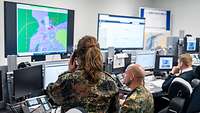
The challenge of data overload: naval staffs as well as command and control facilities must process more and more information about a complex environment
Bundeswehr/Marcus MohrCommand and control centres must be particularly resilient as they are prime targets for adversarial activities. With its Naval Operations Centre in Rostock, the German Navy already operates a stationary maritime headquarters for the Baltic Sea area. Moreover, it must be able to lead NATONorth Atlantic Treaty Organization naval task forces from the sea.
To address this, the Navy needs both an alternative headquarters in a remote location with hardened buildings in addition to the Naval Operations Centre in Rostock’s city centre and the ability to deploy operational sea-based naval staffs at very short notice to increase its overall command and control resilience.
The particular characteristics of the maritime area of operations and the requirements resulting from the new NATONorth Atlantic Treaty Organization Force Structure demand comprehensive capabilities of the German Navy. These include operations in the open Atlantic Ocean as well as in the North and Baltic Seas.
For the structure and objectives envisaged for the German Navy from 2035 onward, the following aspects are thus of vital importance: Warships must be capable of conducting multi-dimensional maritime warfare in the North Atlantic Ocean over large distances. For this purpose, they also need high striking power and survivability. Unmanned systems complement the capability to cover wide areas. The particular threat situation in the Baltic Sea requires preferably unmanned, simple, and cost-effective weapon systems that are available in large numbers.
The Navy must prepare for high-intensity battles, procure a high number of unmanned systems, and employ artificial intelligence, especially for monitoring and evaluating the situational picture. For this kind of Navy to become a reality, two things are crucial now:
The way to the future of the German Navy must be financed in a sustainable manner.
The time to start testing the employment and operation of unmanned systems in experimental projects is now, so that lessons can be learned and the procurement of the indicated numbers can be initiated with minimised risk.

In a possible war of attrition in the context of national and collective defence, mass also means resilience. This leads to the following requirements:
A factor of 3 needs to be consistently applied to the required number of naval means of warfare (1/3 of vessels in maintenance, 1/3 at full combat readiness, 1/3 at graduated levels of combat readiness).
A standardisation of naval means of warfare facilitates both the provisioning of spare parts and training. Means of warfare must be designed for ease of use.
The Navy’s structure must:
be sufficiently flexible to adapt it to the demographic development minimise risks for its personnel on deployments,
enable the testing of new unmanned capabilities in short time frames with a small number of commercially available prototypes (experimentation).
The Navy contributes to combined arms operations through:
system approaches that are networked, swarm-capable and, wherever possible, unmanned
the development of maritime strike capabilities.
Resilience means the capability to remain operational after having sustained losses. This requires:
the protection of a small number of bases for resupply and maintenance
an alternative hardened operational command and control centre as well as mobile tactical command and control at sea.
Navies around the world are paying more and more attention to autonomous systems, with the USUnited States Navy and Royal Navy leading the way. But other European partners, such as France, are also participating in the trend. The latter are focusing in particular on unmanned mine countermeasures in the future.

40-metre-long “Sea Hunter” has been a USUnited States Navy prototype for unmanned surface systems since 2016. The trimaran has already completed several autonomous voyages over long distances. Here during the large-scale naval exercise RIMPACRim of the Pacific 2022
US Navy/Aleksandr Freutel
The USUnited States Navy’s LOCUST programme tested drone swarms for anti-submarine warfare in 2017. LOCUST stands for Low Cost UAVUnmanned Aerial Vehicle Swarming Technology, i.e. the principle: mass matters.
US Department of Defense
In May 2021, the USUnited States Navy’s “Nomad” covered over 4,000 nautical miles from the Gulf of Mexico to California with a reported 98 per cent autonomy. Its cargo deck is used to test various capability modules.
US Navy/Tyler R. Fraser
Three British mine countermeasure drones. The Royal Navy has been testing these systems in cooperation with the French Marine Nationale since 2020 with the delivery of the first autonomous vessels.
Crown Copyright
Project “NavyX”: 42-metre-long “Patrick Blackett” has been the Royal Navy’s test platform for autonomous systems since July 2022. Her most striking feature is the cargo deck aft for modular, containerised experiments.
Crown Copyright
In 2016, the 17-metre-long autonomous submarine “Echo Voyager” was the prototype for the USUnited States Navy’s Extra-Large Unmanned Underwater Vehicle “Orca” today.
Boeing
Submarine drones like the “Orca” will be used by the USUnited States Navy for reconnaissance and electronic warfare, but also for mine countermeasures. Here at the handover from the manufacturer to the Navy in April 2022
Boeing
An assumed Ukrainian naval surface drone, presumably washed up on the coast of Crimea in September 2022. About a month later, seven of these Unmanned Surface Vessels are said to have attacked the Russian fleet in Sevastopol.
source: www.thedrive.com, 21/09/2022; retrieval 24/02/2023Fit for the future: towards unmanned systems and artificial intelligence
Download the booklet PDF, not barrier-free, 845 KB